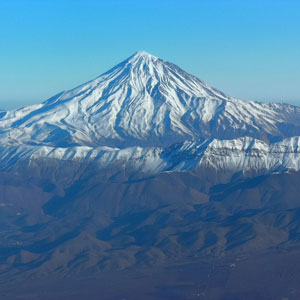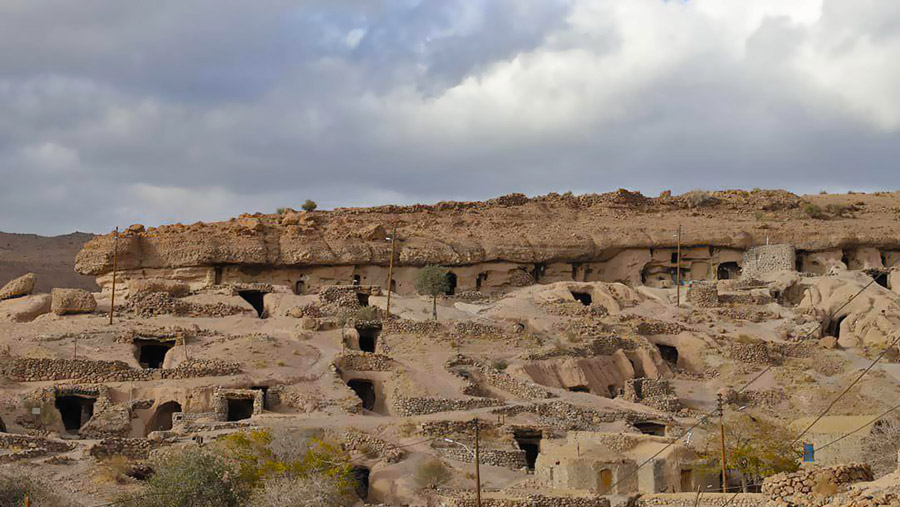 Signin with Google
Signin with Google Signin with Facebook
Signin with Facebook


 Places,Nature,Culture,History
Places,Nature,Culture,HistoryMeymand Village, each Cave-house of it, a Tunnel of Time

Maymand troglodyte village, the symbiosis of men and nature
Can you believe that in the 21st century, in the era of skyscrapers and electric cars, some people still live in a completely natural habitat carved into the rock? They are the proud inheritors of a time when men and women lived in perfect harmony with nature and can be met at Maymand, in Kerman Province, near Shahr-e Babak city, one of Iran's most spectacular villages.
UNESCO distinguished the cultural landscape of Maymand or Meymand with its semi-nomadic agro-pastoralist inhabitants as a unique world heritage as this troglodyte village has stayed unchanged for centuries. To recall its story, one has to go back thousands of years. The origin of Maymand is still wrapped in mysteries, but archaeological discoveries demonstrate that this area was inhabited 12,000 years ago. People seemed to have settled in the village itself for almost three centuries, which is the age of the incredible houses in which people still live: it's thus one of Iran's four oldest surviving villages.

The sacred mountains of Mithras
Who hand-dug such habitat, and why do people choose to settle in this quite hostile environment? The answer is to be found by looking upward, toward the bright sun that was, a long time ago, an invincible symbol on those lands. Indeed, here lived the worshippers of Mithras, a cult born in Persia in the second century B.C., before reaching the Roman Empire. The adepts of this religion believed the mountains to be sacred.
Here, in Maymand village, men have thus started to carve their houses into the mountains, seeking their protection. They used the simplest tools to carve the rock and built their houses without any stone or mortar, giving birth to this stunning place which is a testimony of the ancient culture of Iran. Maymand also has its own school and public bath built according to the same techniques, as well as a mosque that stands thanks to astonishing rock pillars.

A semi-nomadic lifestyle
What a brave ability to resist the difficulties of life has been shown by the first inhabitants of Maymand! Situated between the wildland and the mountains, the local climate has both cold winters and hot summers. Harsh living conditions didn't prevent the population to cultivate their own resources, planting beautiful fields of almond trees, vineyards, and other plants nearby the village.

During the benevolent weather of spring and autumn, villagers enjoy their harvest, while bringing their livestock to the green pastures. However, in summer, they migrate higher up in the mountain to near seasonal rivers, and during winter, they seek refuge in their stone-carved houses. Nowadays, the few hundred people living in Maymand have kept this traditional lifestyle, and are thus semi-nomadic shepherds.

However, a few inhabitants have always preferred to stay in the village all year long: that's why they have built "kapars", a type of habitation with a natural cooling system. Other kinds of houses can be observed, made out of wood and stone, but once again, without any mortar.

The testimony of ancient traditions
Walking a bit further away from the village, the rock continues to display how important it has been for locals throughout centuries: archaeological petroglyphs, carvings, pictographs, and paintings made by locals were annunciators of the future Sassanid's rock reliefs. Eventually, a carved fortress containing more than 150 ossuaries recalls the story of civilization had not buried its dead bodies.
Because Maymand village is everything but a museum, life hasn't left its alleys: here can be witnessed vividly all these ancient traditions. Social practices, rituals, and religious faith remind the strong links uniting local people and Mother Nature.
